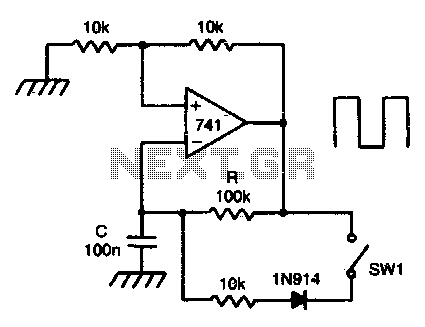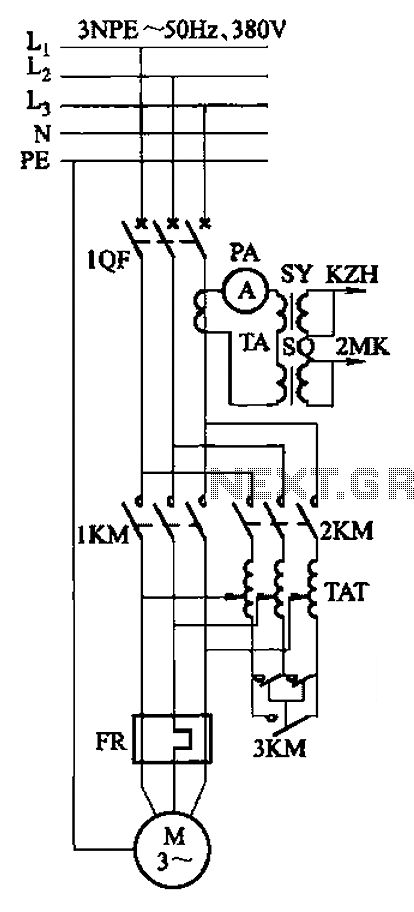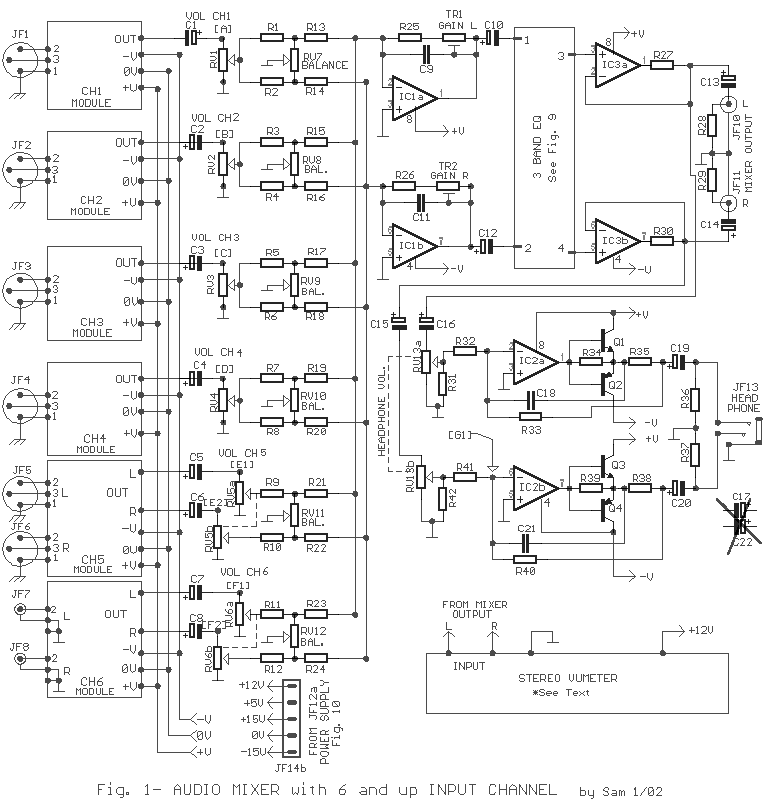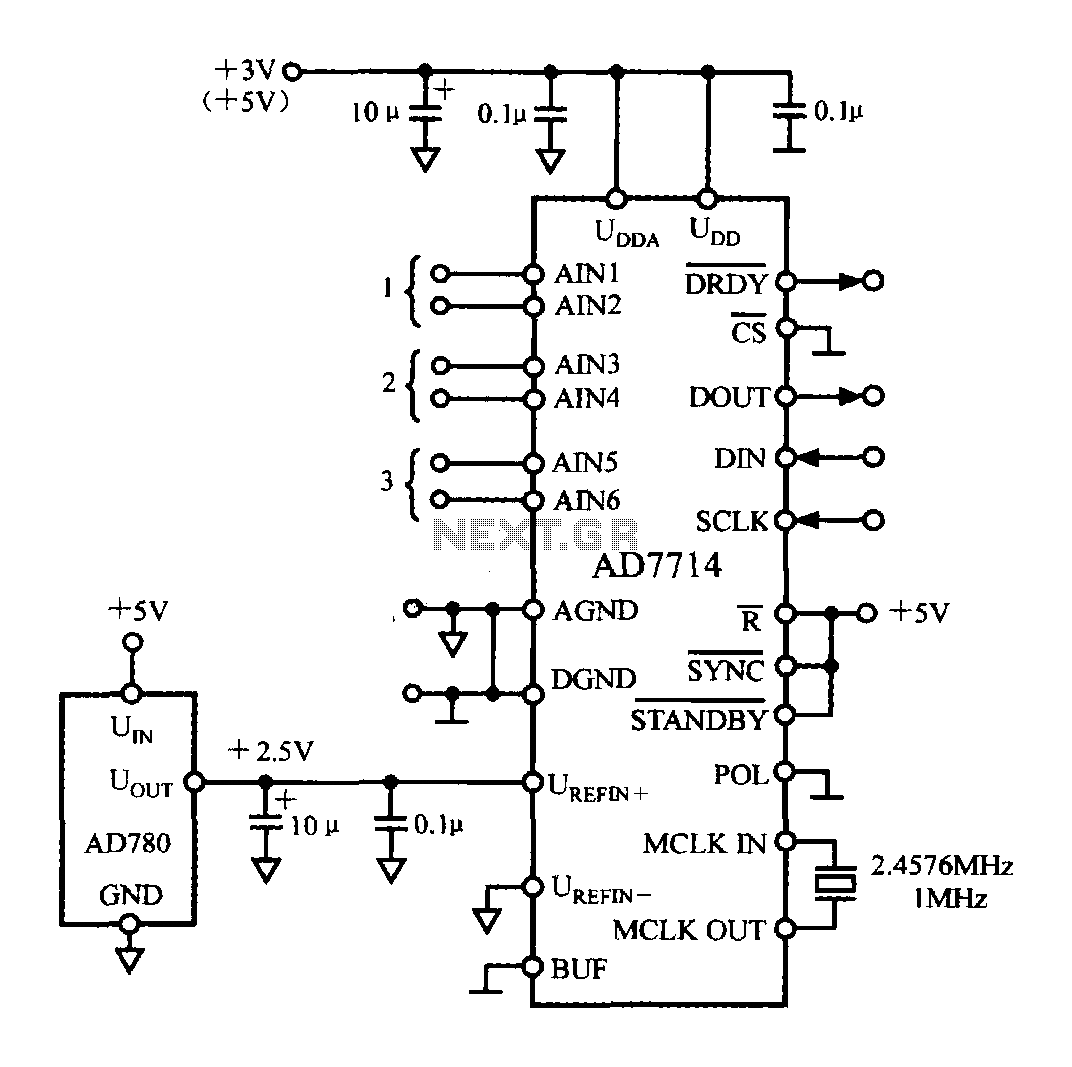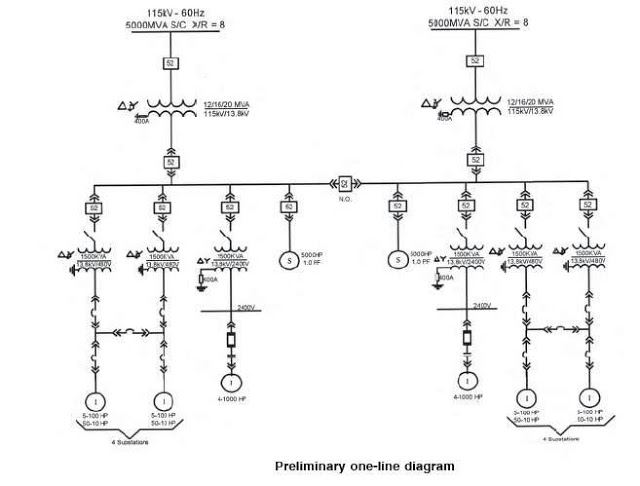
Dual polarity single channel VCO
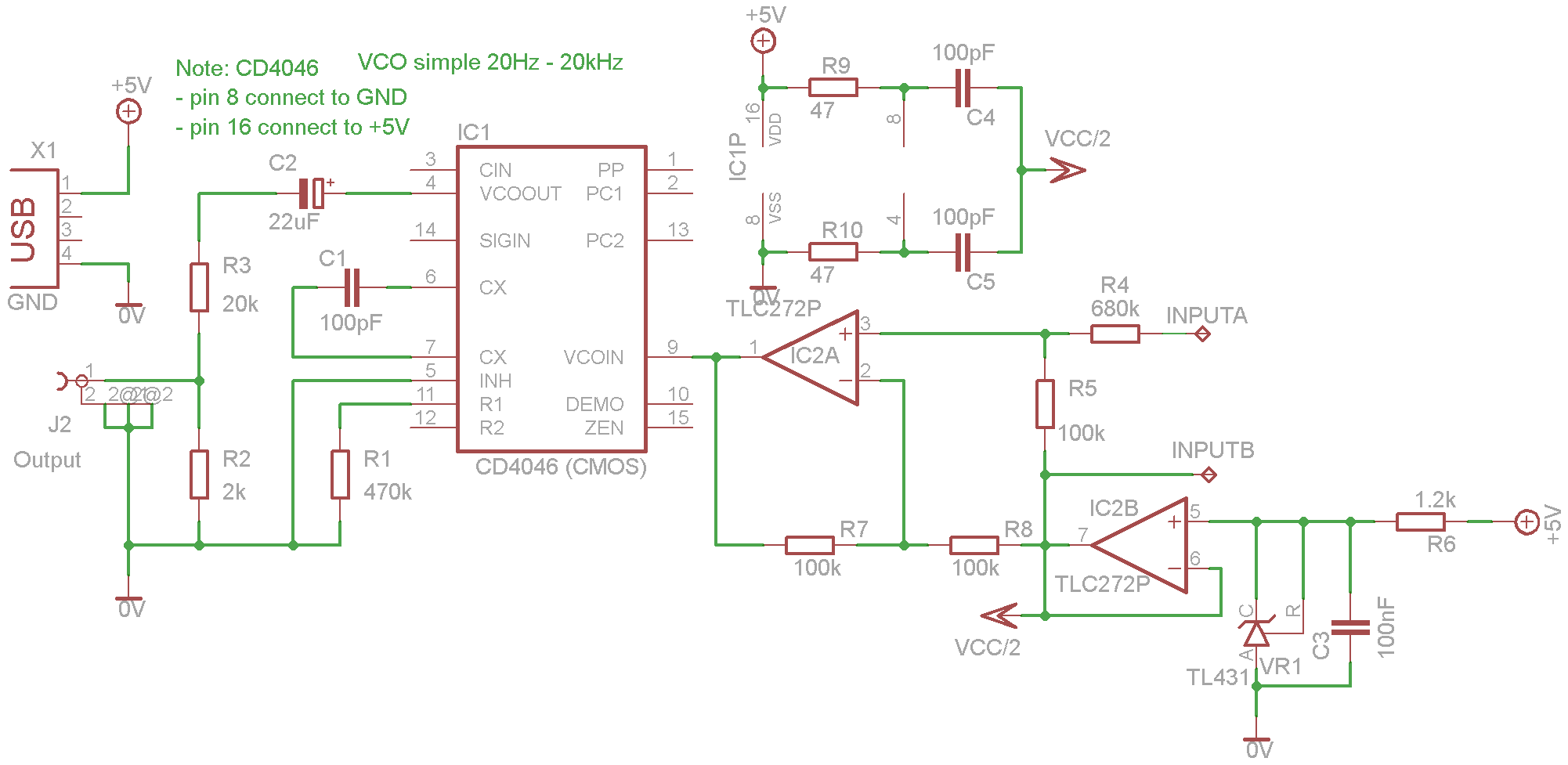
Schematic diagram for a dual polarity single channel input voltage to oscillating frequency control. The circuit can be divided into five parts. The reference voltage is established using a TL431 and a 1.2k resistor, functioning as a 2.5V regulator. An IC TLC272 is configured as a voltage buffer circuit connected to the 2.5V, providing 2.5V at PIN7, designated as (VG).
The circuit operates by utilizing a dual polarity input voltage, which allows for the modulation of an oscillating frequency based on the input signal. The first section involves the TL431, a programmable shunt voltage reference, which regulates the voltage to a stable 2.5V. This is achieved through the feedback mechanism set by the 1.2k ohm resistor, ensuring consistent output despite variations in load or input voltage.
The next part of the circuit incorporates the TLC272 operational amplifier, which is configured as a voltage buffer. This configuration is critical as it isolates the reference voltage from subsequent stages, preventing loading effects that could alter the voltage level. The output from the TLC272 at PIN7 serves as a crucial control voltage (VG) for further processing in the circuit.
The remaining sections of the schematic would typically include additional components such as oscillators or frequency control elements, which are influenced by the voltage derived from the TLC272. These components work in harmony to convert the stable reference voltage into a variable frequency output, enabling precise control over oscillation parameters based on the input voltage characteristics.
Overall, the schematic design reflects a well-structured approach to voltage regulation and frequency control, utilizing standard components to achieve reliable performance in electronic applications requiring dual polarity input processing.Schematic diagram for dual polarity single channel input voltage to oscillating frequency control. How circuit work! Circuit can be separated into 5 parts Reference voltage: TL431 and 1.2k resistor uses as 2.5V regulator. And IC TLC272 construct as voltage buffer circuit connect to the 2.5V also give 2.5V at PIN7 assign as (VG).
🔗 External reference
The circuit operates by utilizing a dual polarity input voltage, which allows for the modulation of an oscillating frequency based on the input signal. The first section involves the TL431, a programmable shunt voltage reference, which regulates the voltage to a stable 2.5V. This is achieved through the feedback mechanism set by the 1.2k ohm resistor, ensuring consistent output despite variations in load or input voltage.
The next part of the circuit incorporates the TLC272 operational amplifier, which is configured as a voltage buffer. This configuration is critical as it isolates the reference voltage from subsequent stages, preventing loading effects that could alter the voltage level. The output from the TLC272 at PIN7 serves as a crucial control voltage (VG) for further processing in the circuit.
The remaining sections of the schematic would typically include additional components such as oscillators or frequency control elements, which are influenced by the voltage derived from the TLC272. These components work in harmony to convert the stable reference voltage into a variable frequency output, enabling precise control over oscillation parameters based on the input voltage characteristics.
Overall, the schematic design reflects a well-structured approach to voltage regulation and frequency control, utilizing standard components to achieve reliable performance in electronic applications requiring dual polarity input processing.Schematic diagram for dual polarity single channel input voltage to oscillating frequency control. How circuit work! Circuit can be separated into 5 parts Reference voltage: TL431 and 1.2k resistor uses as 2.5V regulator. And IC TLC272 construct as voltage buffer circuit connect to the 2.5V also give 2.5V at PIN7 assign as (VG).
🔗 External reference
